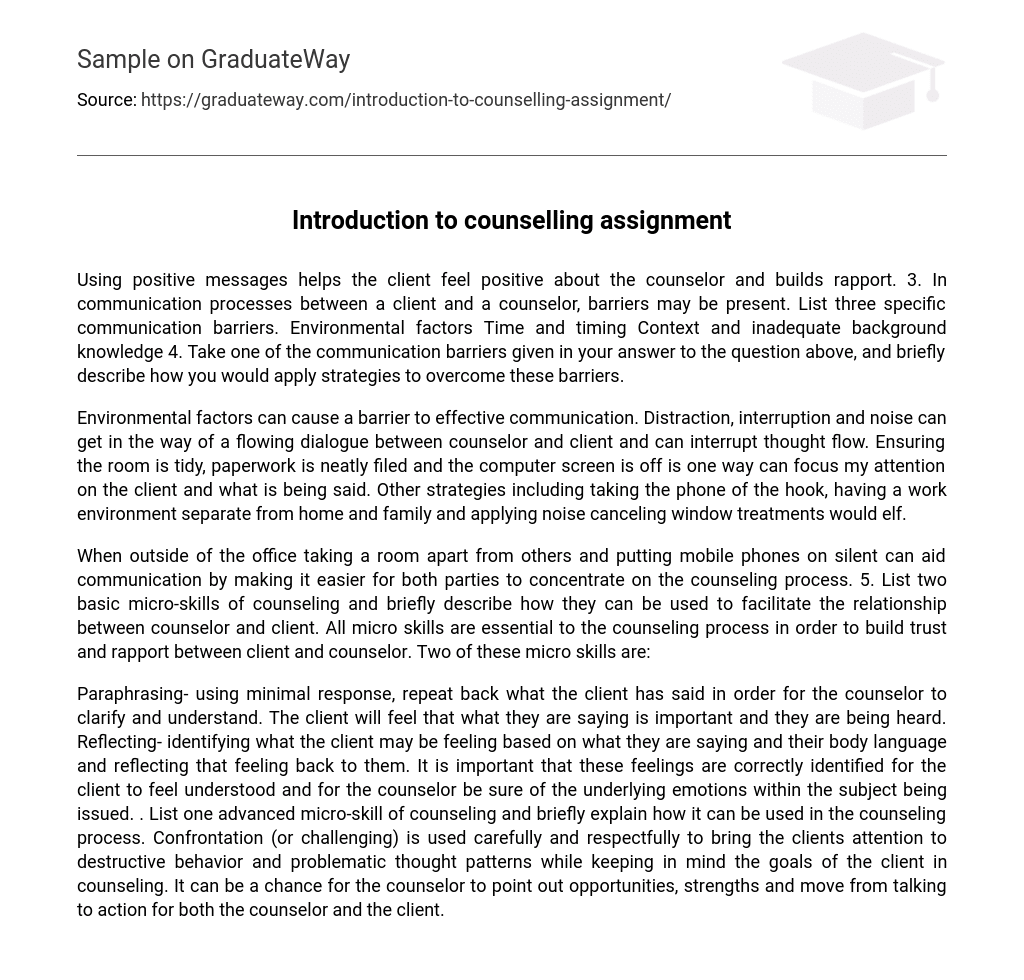Take one of the communication barriers given in your answer to the question above, and briefly describe how you would apply strategies to overcome these barriers. Environmental factors can cause a barrier to effective communication. Distraction, interruption and noise can get in the way of a flowing dialogue between counselor and client and can interrupt thought flow.
Ensuring the room is tidy, paperwork is neatly filed and the computer screen is off is one way can focus my attention on the client and what is being said. Other strategies including taking the phone of the hook, having a work environment separate from home and family and applying noise canceling window treatments would elf. When outside of the office taking a room apart from others and putting mobile phones on silent can aid communication by making it easier for both parties to concentrate on the counseling process.
List two basic micro-skills of counseling and briefly describe how they can be used to facilitate the relationship between counselor and client. All micro skills are essential to the counseling process in order to build trust and rapport between client and counselor. Two of these micro skills are:
- Paraphrasing- using minimal response, repeat back what the client has said in order for the counselor to clarify and understand. The client will feel that what they are saying is important and they are being heard.
- Reflecting- identifying what the client may be feeling based on what they are saying and their body language and reflecting that feeling back to them. It is important that these feelings are correctly identified for the client to feel understood and for the counselor be sure of the underlying emotions within the subject being issued.
List one advanced micro-skill of counseling and briefly explain how it can be used in the counseling process. Confrontation (or challenging) is used carefully and respectfully to bring the clients attention to destructive behavior and problematic thought patterns while keeping in mind the goals of the client in counseling. It can be a chance for the counselor to point out opportunities, strengths and move from talking to action for both the counselor and the client.





